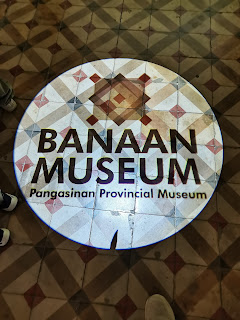I am a Pangasinense and I admit that I do not have sufficient knowledge about my province.
I was in
Grade 6 when I saw the map of Pangasinan for the first time in our classroom. I
was delighted when I found my town, Anda. Some of the municipalities and cities
are familiar to me, but most of them are not.
I counted
all the cities and towns and I said to myself they are many. I was dreaming
before that I would have visit in the future.
After
eighteen years, I have not fulfilled it. With its 44 municipalities and four
cities, the province is wide and as a busy person, going to these places is a
challenge for me.
Reaching
these places is the only way for me to learn about Pangasinan—its culture and
history.
When I was
in elementary, I was a contestant for geography, history, and civics several
times. I have read many things about the Philippines from the time of Lapu-Lapu
until the presidency of Gloria Macapagal- Arroyo.
Unfortunately,
the quiz does not include local history as main component of the competition. I
have learned being a Filipino, but I am clueless about being a Pangasinan
native.
In my
thirty years of existence, there is something missing in my identity. I want to
learn more about my roots. I want to embrace everything about Pangasinan, my
home.
That is
why, I went to Banaan Museum in Lingayen, Pangasinan.
The
provincial museum was opened to the public September 11 last year. I tried to
book for a visit during the break in October, but it did not prosper. I had the
chance to be there during the December holiday break.
For those
who are planning to visit it, one must undergo online reservation. I left our
house early as it takes more than two hours to get there. The facade was
alluring. It was a welcome feast for eyes. That impression made me think there
are lots of things that I can observe inside the building. I was right.
I went
alone, and I needed to join other people for a group tour. I was with a group of balikbayan. What amazed
me was the matriarch of the family used to study there when she was a school
kid.
Before it
became a museum, it is called Casa Real. It is one of the oldest buildings in
the capital of the province. It used to be a seat of power, a court, and a
school. Being with someone who used to roam in that place was a bonus. It was a
nice scene to see that she brought her grandchildren who grew up abroad for
them to know the roots of their family.
Aside from
them, there were also a group of teenagers who opted to spend a day
understanding the province rich history.
We started our museum tour at Gallery 1- Where Asin and Bolo Embraced. The tour guide relayed the etymology of Pangasinan’s name. I learned before that the name means the land of salt. The additional learning I got from that gallery was the place Caboloan that has something to do with a place rich of bamboo. This and Pang- asinan form the province’s modern- day territory.
Then, we were brought to Gallery 2- The Shape
of our Homeland, one of my favorite galleries. As a map lover, I enjoyed gazing
on big sizes of maps showing the six legislative districts of Pangasinan.
There are
eleven galleries housed in the building. There is an art gallery for
contemporary artists. Moreover, there are history galleries showing folk
stories, Pangasinan- Chinese relations, local heroes, the province’s
involvement in World War II.
Another
gallery that I love is Gallery showcasing the literary works of Pangasinan
writers.
The one-and-a-half-hour
tour and Php 200 were not wasted. Truly, the museum’s name was justified.
Banaan, a Pangasinan word which means “meeting place” is the right word to
describe how Pangasinan’s past, present, and future converge.
I went
alone, but I went home with the rich heritage of more than 3 million
Pangasinense. I learned about the past. I learned about the present. And I
learned that I am the future that my province needs. I am truly proud
Pangasinense.
(This article was first published by White Sand, the official publication of Tondol National High School under Features section.)






















0 Comments